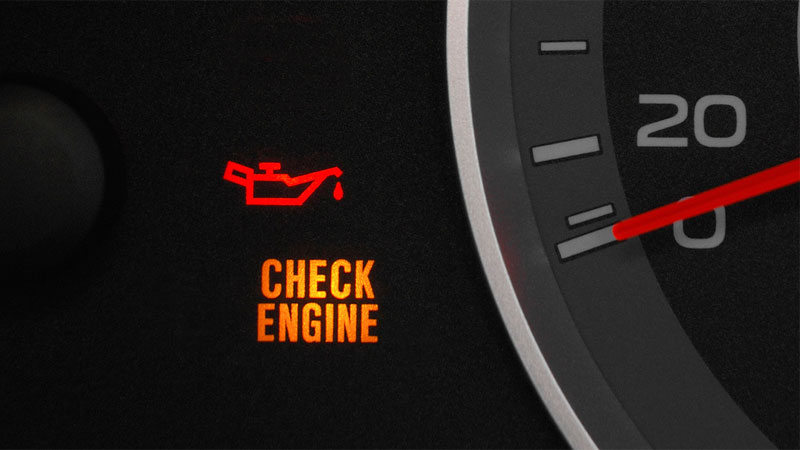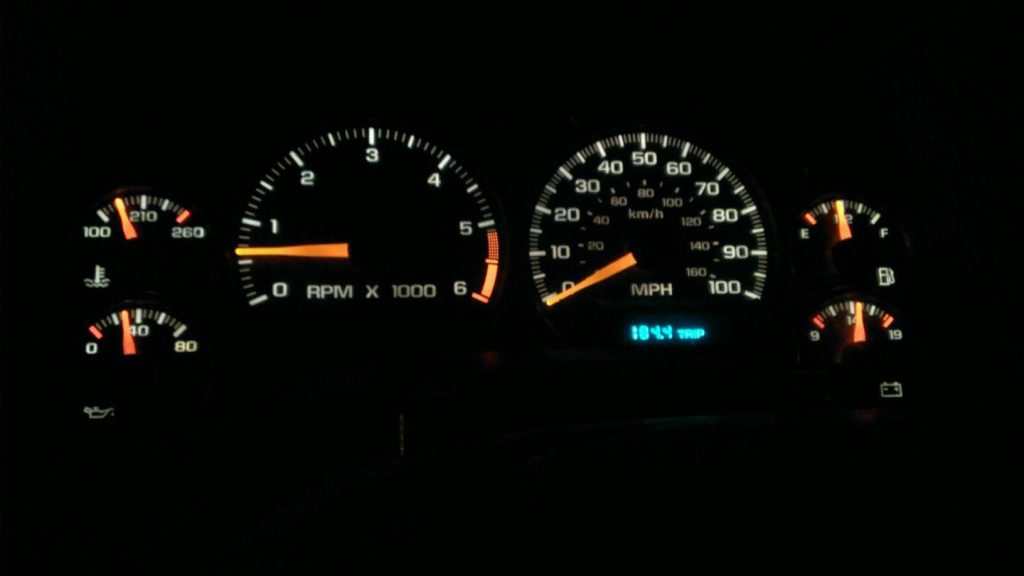What Is Normal Oil Pressure At Idle?
Knowing what the suitable oil pressure should be can help you to make sure that the car engine runs smoothly and stays healthy. If you notice the low oil pressure, the amount of oil supplied is not enough for lubrication, which will lead to high-friction components in the engine that wear out quickly, loudly, and easily increase heat. It means that low oil pressure is a warning sign for your engine. Are there any exceptions? Many motorists in the process of driving cars have noticed that the oil pressure drops at idle. So why? and what is normal oil pressure at idle?
What Is Normal Oil Pressure At Idle?
Oil pressure is a vital indicator in car engines you need to consider. However, it’s going to vary depending on some factors: types of engines and temperature. To know the exact pressure of oil at idle, first, let’s have an overview of the oil pressure.
What is the oil pressure?
Automotive engine oils operate in the form of a circulating system. The oil will be injected by the pump into the engine, then flow into the tank, then continue to be sucked up through the filter and sprayed into the engine. Oil pressure is created by the pump pumping oil into the vehicle’s engine system. When the engine operates, the normal oil pressure is usually in the range of 25-65 PSI (depending on the vehicle model). The normal oil pressure always remains stable within this level. If the oil pressure suddenly rises or falls abnormally low, it is a sign that the lubrication system is having problems.
Cars are equipped with an oil pressure sensor. If it detects that the oil pressure is too high or too low, the sensor will transmit a signal. And the ECU will turn on the lubricating oil pressure warning light to notify the driver. When you see that the car has abnormally low or high oil pressure, it should be checked as soon as possible. Because the lubrication system malfunction will greatly affect the engine.
>> Read more: Is It Ok To Mix Oil Brands In Your Engine?
What should oil pressure be at idle?

To ensure your car engine operates with the best performance. Automakers recommend that the oil pressure should always be above 20 PSI (pounds per square inch) when idling. However, corresponding to each type of vehicle, we will have different pressure levels:
- Truck: 20-30 PSI at idle
- Car: 25-35 at idle
Most carmakers suggest that oil pressure should be around 30 PSI when running idle and about 60 PSI when the engine is running at higher speeds. If you check that the oil pressure is lower than 20 PSI. If you notice that the oil pressure is low than 20 PSI, you should check as soon as possible. As we all know, engine oil not only helps the moving parts of the engine operate smoothly but also helps to cool them. If the pressure is too low, the engine will not be properly cooled, and it can cause serious consequences.
This difference in the oil pressure will happen as the oil’s viscosity thins due to heat. Most vehicle engines have an oil pump. The principle is to increase pressure with speed, so the engine spins higher and the result is the oil pressure increases. This function makes sure that parts in your engine have enough lubrication as they move faster and start generating more heat. When your car runs idle, you don’t need the high oil pressure. 20-25 PSI is sufficient for most engines. You just ensure that the pressure will go up when your car increases its speed.
What Causes Low Oil Pressure At Idle?
If you notice that the oil pressure is too low at idle (below 20 PSI), it can be a symptom that tells you there’s a problem with your car. If the oil pressure is lower than the standard level, the engine will not have the necessary amount of lubricant. This makes the parts and components easy to wear and causes overheating and damage. As we know the oil pressure at a high speed is about 60-70 PSI. Why the oil pressure is low while running at idle – Let’s find the causes:
The car is low on engine oil
Car oil shortage is the most common cause of oil pressure drop at idle. Because the amount of oil is not supplied to the engine, the oil pressure drops. To know exactly if this is the cause, check the amount of oil available with the dipstick. If you see that the amount of oil is too low, near or below the Low level, this is the reason. There are many reasons why the car is low in oil such as the car has not been changed for a long time. The oil is leaking due to open pipes, or worn crankshaft bearings …
Dirty oil
Engine oil is responsible for cleaning the internal components of the engine. Therefore, over time, it will accumulate many impurities and residues. On the other hand, because of working in a high-temperature environment, the oil is also gradually degraded. If the oil is not replaced periodically, it will become heavier and denser due to dirt (low viscosity) causing the oil pressure to easily drop or increase. Seriously affecting the efficiency of lubrication – cooling – cleaning the engine.
The oil pump/oil filter is damaged
If the pump system is damaged, the oil cannot be sucked up normally or the filter is blocked, it will make it difficult for the oil to circulate. From there, leading to low oil pressure error or loss of oil pressure. Therefore, you need to pay attention to choosing an oil with the right viscosity for your vehicle to avoid low oil pressure. In addition, it is also important to learn carefully the other specifications of the oil such as API, ACEA, etc. to buy the best product.
Oil pressure sensor malfunction
Most cars today are equipped with an oil pressure sensor. If it detects a problem with the oil pressure (too low or too high), this unit will send a signal to the ECU. The warning light is then turned on to remind the driver to correct the error. However, sometimes, the sensor is dirty or damaged, so it sends the wrong signal, even though the oil pressure is still keeping a stable level.
Using a low viscosity index oil
The viscosity Index (SAE) is a measure used to identify the density of oil. Specifically, the lower the SAE, the thinner the oil will be. For example, the 10w30 large displacement Essenza oil will be thinner than the 10w40 oil. If the viscosity index is too low, the oil is too thin and the oil pressure in the engine is reduced.
>> Related post: Low Oil Pressure: The Causes and Solutions
How To Fix Low Oil Pressure At Idle?

To keep the engine running in top condition, oil pressure should be checked periodically and within the manufacturer’s recommended range. The oil will thicken and have a higher pressure when the engine is cold. Whereas the oil pressure will decrease as the engine warms up. To ensure accuracy we should check the oil pressure when the engine is at operating temperature.
Step 1: Check the oil level.
Open the bonnet and check the vehicle’s oil with the dipstick. If the oil in the car is still full and the oil pressure indicator light is on, it means the car is having other problems. If the oil level is below the marked position, at that time, the car is out of oil and needs to be replaced.
Step 2: Inspect the oil pressure sensor.
Remove the sensor, insert the pressure gauge and start the car. If the value is returned to the standard oil pressure value, the sensor is faulty. If the return value is lower than the standard value. The sensor is still working fine, but the oil pressure is low due to other reasons.
Step 3: Don’t forget to check the filter/oil pump
Remove the oil filter and check it for debris. If so, you need to clean (or replace it if necessary). According to experts, the car oil filter should be changed about every 10,000 miles.
If the car has very low oil pressure or no oil pressure, check the oil pump drive belt.
Step 4: Check the crankshaft bushing
Check the condition of the crankshaft bearings. If signs of wear are detected, this is most likely the cause of the oil leaking, reducing the oil pressure at idle. The solution, in this case, is to replace the crankshaft bearing with a new one, then add engine oil.
Closing Thoughts: What Is Normal Oil Pressure At Idle?
20-35 PSI is the answer to this question: What should my oil pressure be at idle? In this article, we have outlined the causes of low oil pressure at idle and how to check and fix it quickly. Hope this article has brought you useful knowledge. If you still have some questions about the normal oil pressure at idle, don’t hesitate to comment in the following box below.














